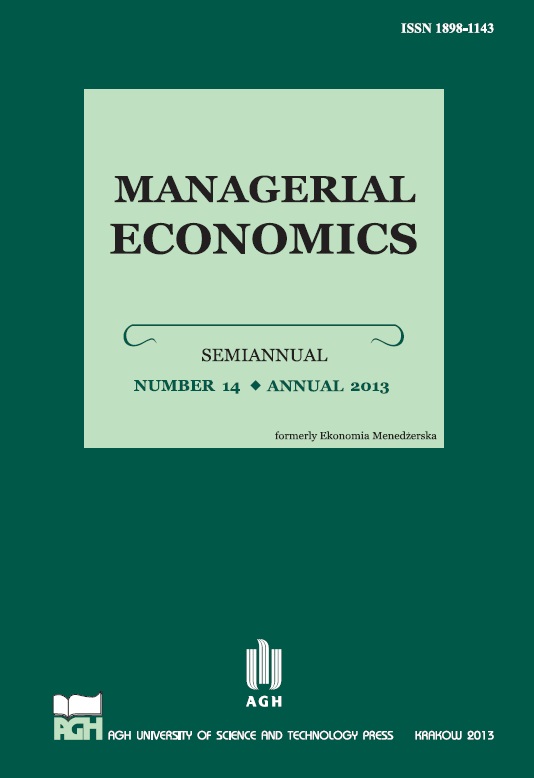The institutional matrices theory as the basis of explanation of real estate bubble
DOI:
https://doi.org/10.7494/manage.2013.14.113Keywords:
economic bubble, real estate bubble, institutions, institutional matrices theory, soft budget constraintAbstract
The increase of prices that could not be explained on the basis of fundamentals is still a very complex process. The economic bubbles have occurred over hundreds of years. Multiplicity of markets, geographical spread and variety of items influenced by bubble makes them still poorly understood. Insufficiency of actual structures for understanding and predicting the economic bubble was the reason for explanation based on the ground of new institutional economy. In the article factors creating the real estate bubble are examined using the institutional matrices theory. The research is performed through the analysis of data and identification of factors conductive in formation of enormous price increase in the United States, Spain and Poland. The study confirms that the lack of balanced combination of dominant and complementary matrices institutions leads to the creation of real estate bubbles. Besides, it was confirmed that the combination of dominant Y-matrix with their basic institutions is the necessary condition of the growth beyond the fundamentals. The examined institutions distorting the market growth and turning it into the bubble have been divided into two groups. First, unintended effects of intervention in market mechanism, has been examined by the identification of housing finance organization in the United States and analysis of the effects of their activity, analysis of social housing policy in Spain and Poland, and finally by the analysis of tax and subsidies systems. Second group, wrongly understood full “liberalization” and deregulation of all market processes, has been examined at two levels: creation of debt for the customers and financing banks themselves. Research was performed in this group in the area of bank lending standards, securitization process and capital requirements for banks. The activities of intervention in the market mechanism were against the dominant matrix and were planned for stabilization and stimulation of real estate market. But in fact supports the speculation and blow of the bubble due to the inappropriate design of institutions of complementary matrix. The activities of wrongly understood full „liberalization” were intended for absolute deregulation by elimination of institutions of complementary matrix. Research confirms that liberalization is possible in the healthy economy however it does not mean for sure that market mechanism could work without any institutions.
Downloads
Downloads
Issue
Section
License
Download, sign, scan and attach copyright statement form.

